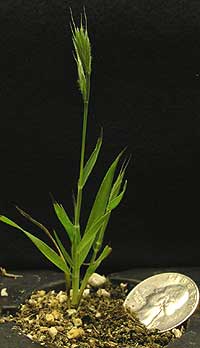
Brachypodium distachyon
After it was sequenced in 2007 as part of the DOE Joint Genome Institute’s Community Sequencing Program, researchers distributed grass seeds from the studied lines to over 200 laboratories in 24 states and 17 countries. Researchers now want to resequence Brachypodium using next generation sequencing technologies to collect more genomic information not captured using traditional Sanger sequencing, thus increasing the plant’s utility as a model organism for both food and fuel purposes. With the additional genomic data, researchers hope to identify the function of all genes in various grass species that could be used for bioenergy production.
Principal Investigators: John Vogel, USDA-ARS Western Regional Research Center
Program: CSP 2009